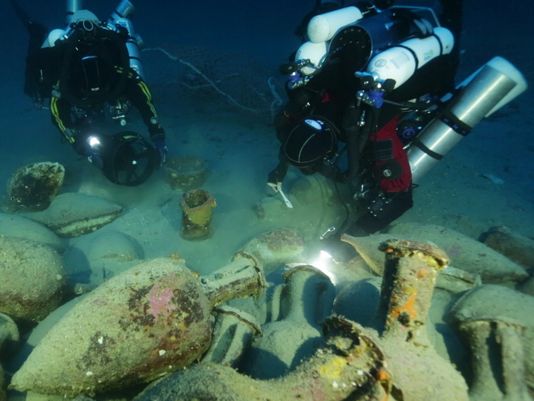Scientists from Italy and skilled divers from the Florida-based group called Global Underwater Explorers teamed up to explore one of the oldest shipwrecks in the Mediterranean. The 50-foot Greek wooden ship, Panarea III, is believed to date back to the second Punic Wars between Rome and Carthage from 218-201 B.C. and lies 410 feet beneath sea level.
Its depth kept it safe from looters and entanglement in fishing gear for many centuries and it is in better condition than most other shipwrecks of this type.

The divers and archaeologists found a pile of amphorae urns that were used to move olives, wine and other cargo. They also discovered a sacrificial altar inscribed with Greek lettering that gives clues as to the ship’s origin.

“It felt very much like a ghost ship awaiting the boarding of ancient mariners,” said diver Jarrod Jablonski.

On their part, archaeologists believe that the shipwreck helps us understand more about daily life in the ancient world as well as ancient trade.

The ship was first discovered off the Aeolian island of Panarea, 40 miles north of Sicily, in 2010 by American researchers using sonar and a remote-controlled submersible. Archaeologists are examining the possibility of the ship being a supply vessel that Claudio Marcello, a Roman consul who conquered Syracuse in 212 B.C., may have owned.
Archaeologists believed that it may have hit rough seas before being flung onto rocks that plunged it to the sea bottom, however they hope that the mission will shed light on the mystery of the shipwreck.
The Florida divers, able to descend hundreds of feet deeper than most other divers, are helping archaeologists by managing to fetch artefacts that would be too difficult for a robotic submersible to recover. The divers will return to the site sometime next year to continue where they left off.




































